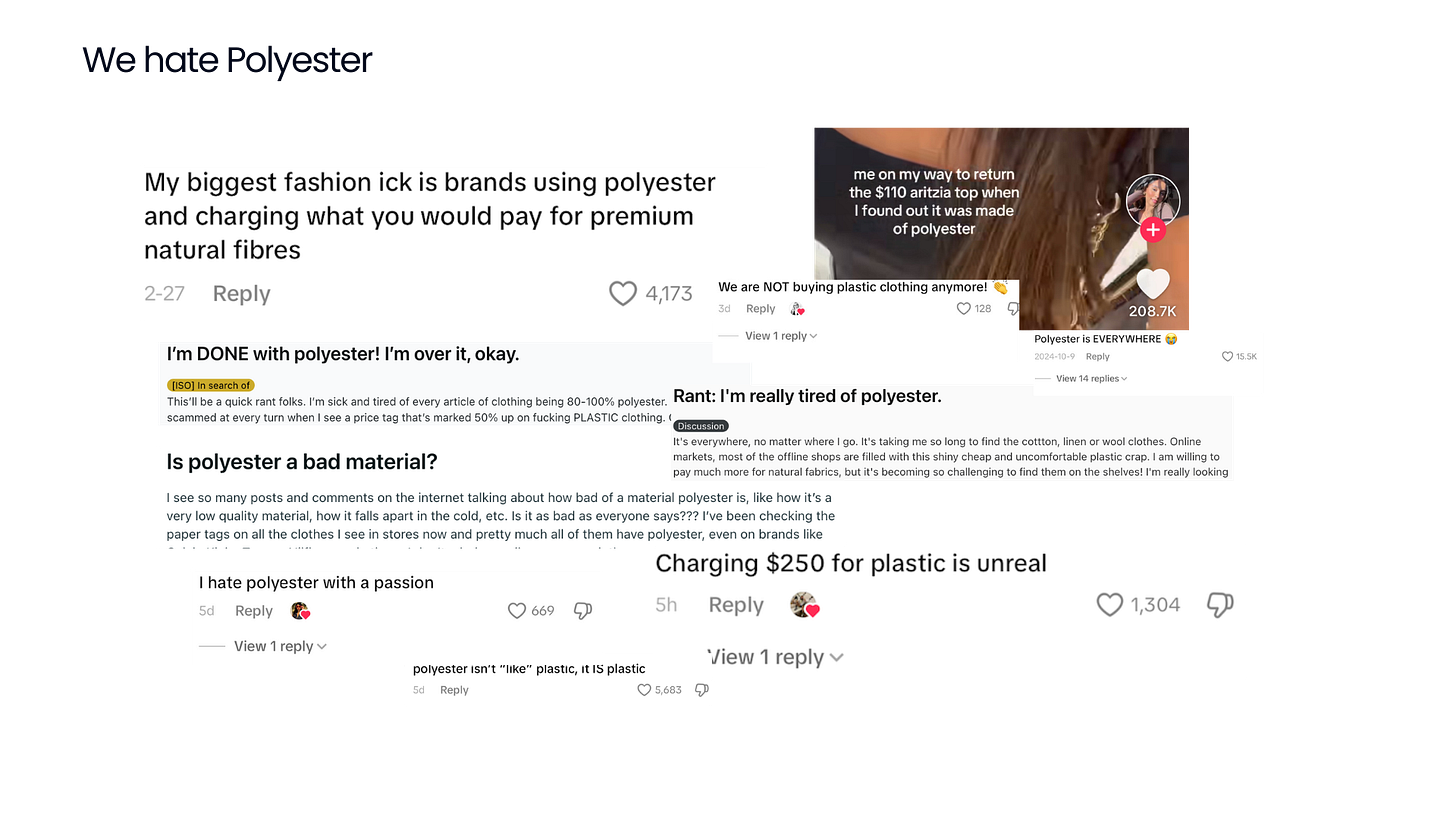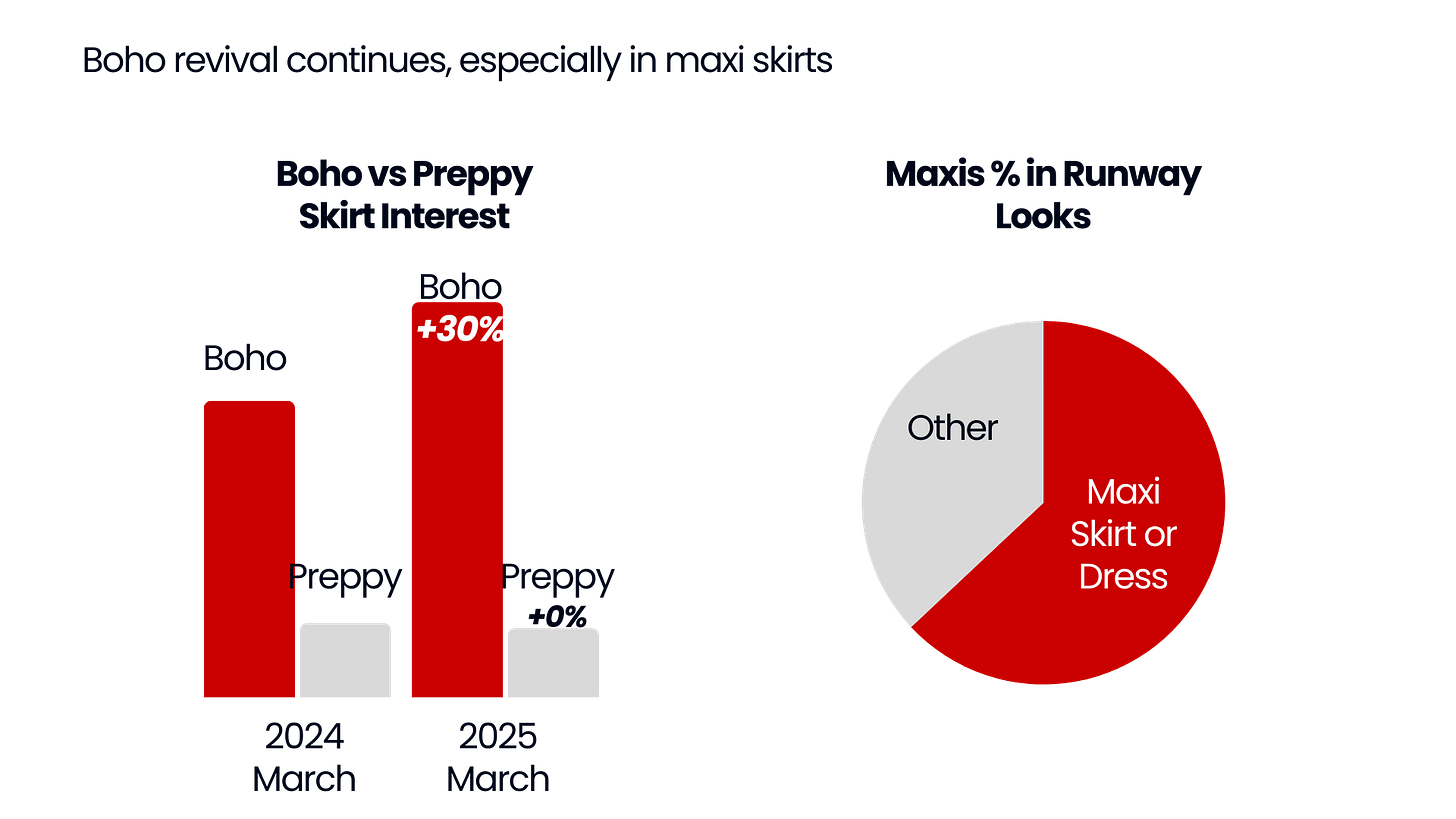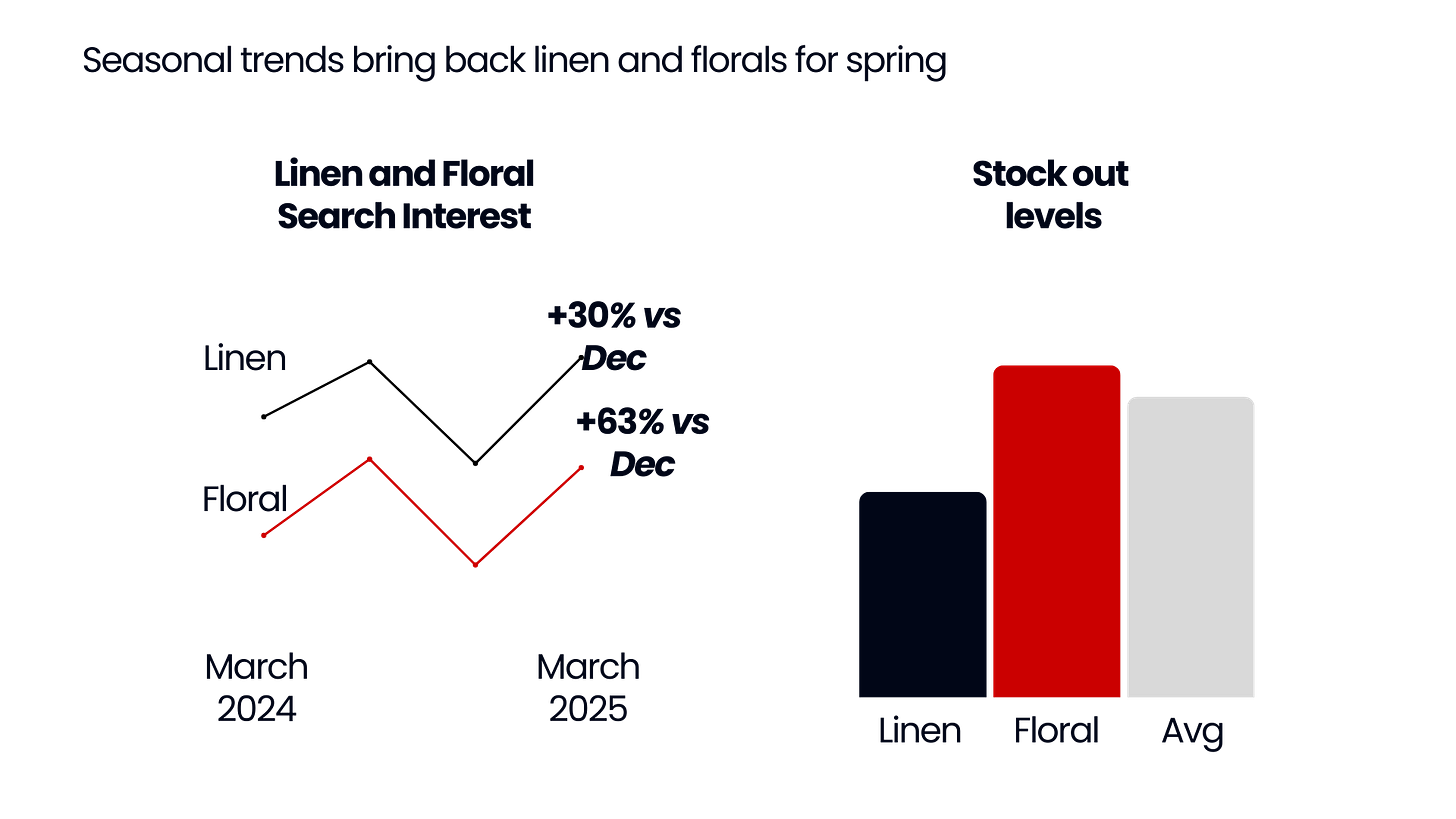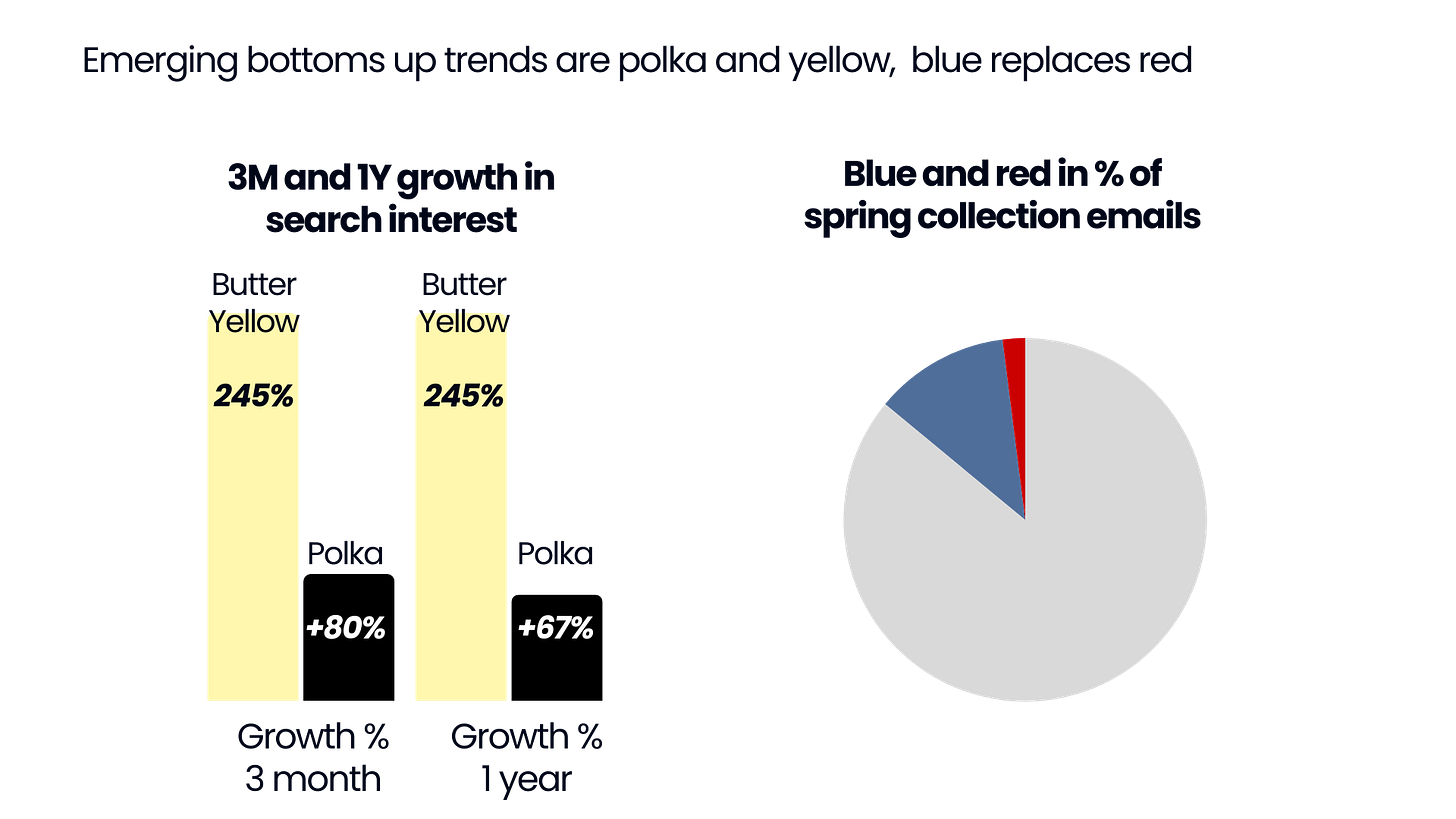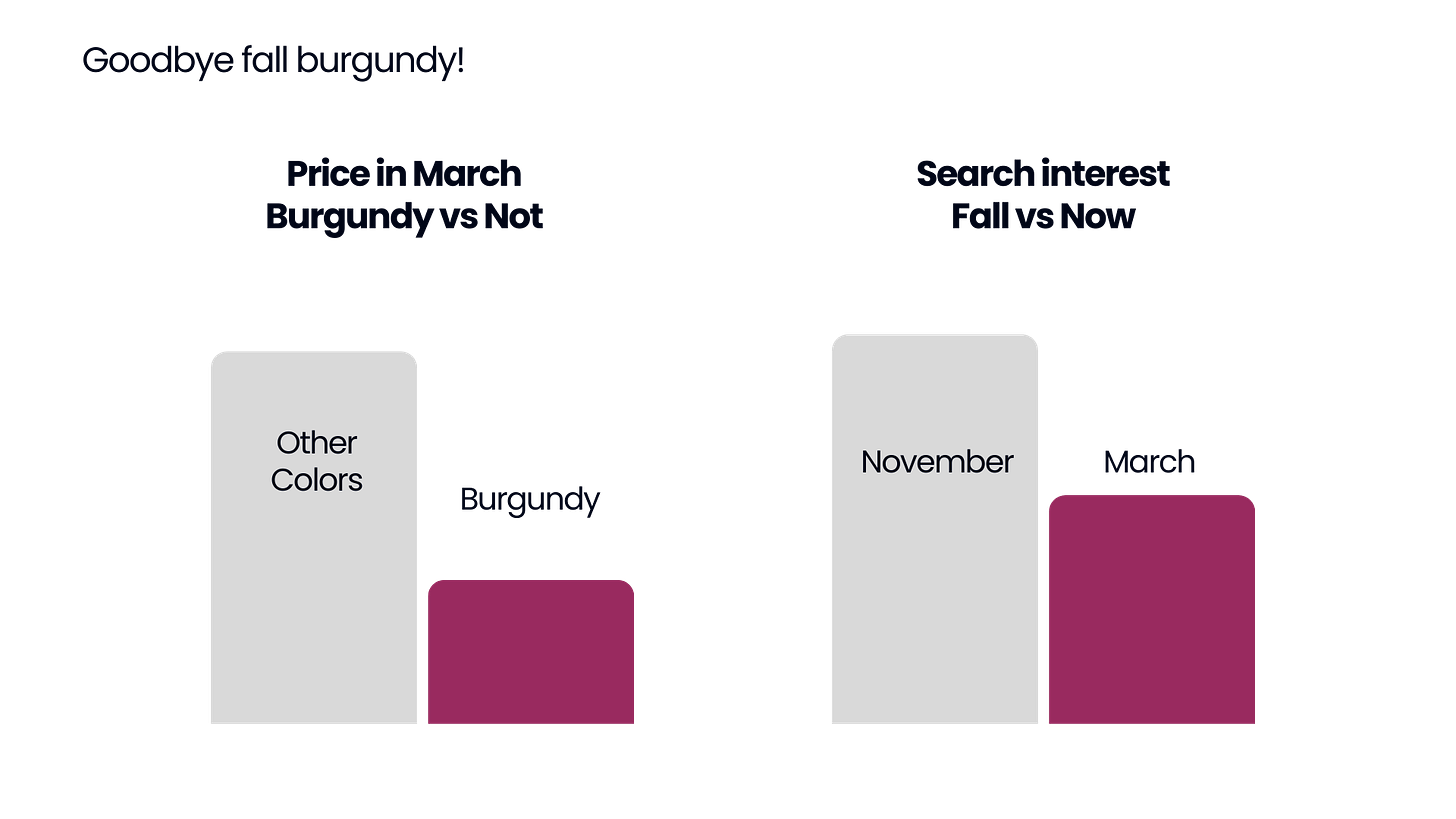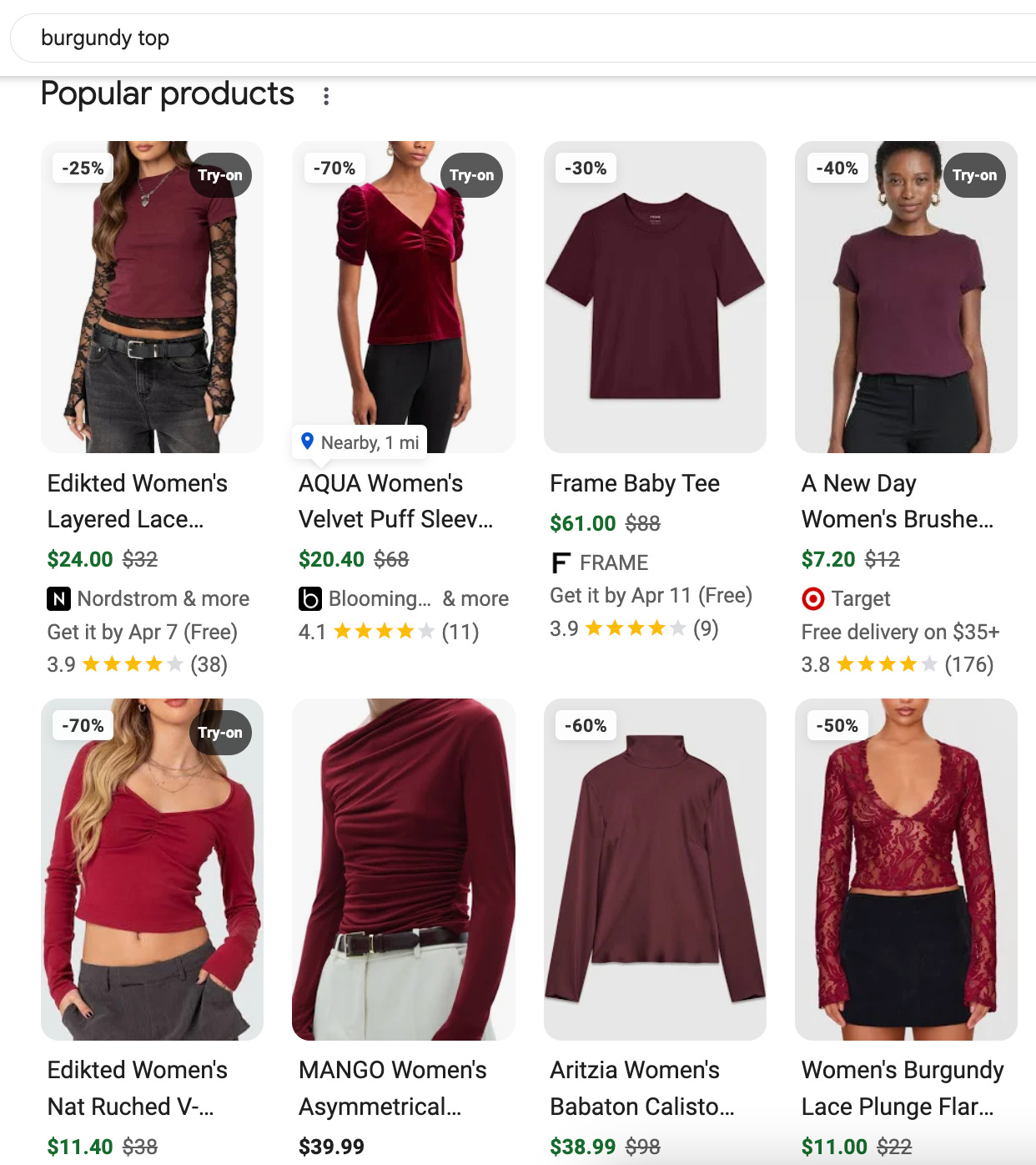What’s selling in March
Less polyester, more boho skirts
What does it mean when a Shopify store ghosts its Instagram account?
The Commerce Department reports that retail sales are short of expectations. Nike’s revenue is down, Lululemon lowered sales forecast. But what stands out most to me is what I’m reading from the ground up: on Reddit, Shopify store owners are mentioning year-over-year sales declines. And of the hundreds of stores I found on Instagram, about 2% have either gone out of business or taken down their sites within the last few months – leaving fall campaign pictures, accounts, emails ghosted. Are we on the verge of a retail slow down?
Today’s agenda - What’s selling in March
I’ve read fashion blogs for most of my life, confused. What always bothered me is how often they rely on someone saying something is cool instead of actual indicators. Who decides what’s “in,” anyway? Why should I care what a few Vogue editors think is stylish?
Yes, I remember the Devil Wears Prada monologue. But there’s a more bottoms up way to spot what’s really happening in apparel—by analyzing patterns across a mix of signals: public forum sentiment, out-of-stock alerts, trending search terms, bestsellers, front-store displays, sales racks, and maybe even data driven runway analyses.
From growing demand for natural fibers (as long as they’re reasonably priced) to the return of florals this spring (yes, florals for spring), here’s what’s selling in March.
Less polyester, more natural fibers
There’s been a shift in sentiment against polyester and in favor of natural, biodegradable materials that I just can’t shake. People are tired of the feel, the environmental impact, and the price tag that no longer matches the quality.
I notice it all over social media comments, where creators and commenters alike are calling out synthetic fabrics and celebrating linen, cotton, wool, and silk. There’s definitely been an uptick in posts calling out brands over the past few months. Every time I casually mention polyester—whether in a TikTok or a tweet—it gets a ton of traction. Clearly, it's hitting a nerve.
And it’s seen in demand- there’s a year-over-year increase in search interest for natural materials. Cotton, linen, and silk are more likely to be out of stock in certain price ranges than polyester – although this could be a symptom of newer styles being tested on polyester.
I understand why retailers use polyester. But as consumer sentiment turns against the so-called “sustainable” incumbents, there’s a real opportunity for someone new to step in, rebuild trust, and take market share. We’re in a moment where materials matter. More and more consumers are starting to ask the right questions: What are our clothes actually made of? And why do they cost so much if they’re mostly plastic?
Boho Maxis
On Reddit, sentiment toward the bohemian skirts is heating up again for 2025 with positive mentions and excitement for spring. Skirts are the most likely garment to be out of stock— selling out faster than other items; suggesting retailers may be underestimating demand or having trouble adjusting seasonally. Search interest is spiking, partially driven by seasonality rebound in skirts and partially a continued revival of last year’s boho peak.
Boho’s resurgence seems to be driven top-down—led by brands like Chloé in FW24, amplified by fashion blog coverage, now showing up across the board. Midi and maxi boho-inspired skirts were featured in a significant share of SS25 runway looks, signaling a continued shift.
This isn’t just a flash trend—it’s shaping up to be a key styling narrative for SS25, grounded in ease and femininity.
Seasonal linens and florals
Reddit is buzzing with excitement over warmer weather, and the seasonal shift is already showing up in consumer behavior. Sundresses— a spring/summer staple—are seeing a 3x spike in search interest over the last three months.
Linen is also having a moment. Search interest is steadily rising, right on schedule, ready to resume last year’s summer of linen. I knew linen was locked in for SS25 the moment I passed a big retailer SoHo window on my morning walk in early March— front mannequins in linen.
And yes, yes—we all know the meme: “Florals? For spring? Groundbreaking.” But here’s the thing: florals saw year on year demand growth last fall, meaning retailers are likely to catch up on the trend. They showed up on SS25 runways and forum mentions confirm consumer interest. I’m seeing them on many landing pages I open these days.
Florals are the safe bet. Even if they’re predictable, they work.
Emerging polka, yellow, blue
Polka dots are quietly bubbling up—searches are rising on platforms, and the pattern is slowly showing up in new drops from retailers, seen the most in new ads. It’s not dominating runways (yet), which makes this feel like a bottoms-up trend—nostalgic, and a little unique. Every drop I see is either low price or made of polyester which makes me think it’s driven by smaller retailers validating the trend or trying to get a viral drop. It definitely caught my eye.
Butter yellow is trending fast—search volume is growing faster than for standard yellow. It’s soft, slightly nostalgic, and feels very spring-coded. Paired with rising sentiment around softness, pastels, and a craving for color— it may just stick around for this year. I’m even writing this as I stare at a huge new apparel ad on 59th street showcasing every design in light yellow. It’s featured in best selling pages and cropping up on SoHo window displays.
Blue is notable as well, especially as it seems to be replacing red. In new collection emails, blue is the most commonly referenced item color for spring alerts, and it appeared in a significant portion of SS25 runway looks.
Goodbye fall!
Burgundy, plaids, and some fall style reds—which were everywhere and heavily stocked last year—are now mostly seen marked down and out of stock, with search interest in decline as the trend cycle moves on. On the SS25 runways, red made a very small portion of looks, and I’m not seeing it mentioned in spring emails as often.
In particular, burgundy is being heavily discounted compared to 3–6 months ago. That drop suggests lower demand and some last-ditch efforts from brands to clear inventory—possibly a good arbitrage opportunity for any shopper comfortable shopping off-season. After all, oxblood red (a shade off, similar to burgundy) was the color of 2012 and 2024—it’s likely to return again.
It’s also a reminder of how cyclical fashion really is — and why it’s often smarter to buy for long-term style rather than whatever happens to be on shelves right now.
Still, it’s cool to watch supply and demand play out in real time — almost like a real-life marketplace, when pricing fades as a trending color cools off.
Thanks for reading
If you enjoyed this, share it, forward it, or subscribe for more. All reporting is based on my observations, using public sources and tools I built.


